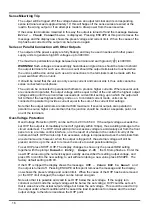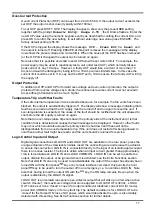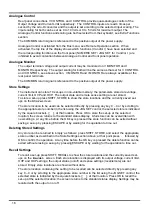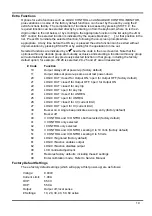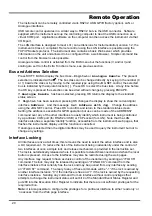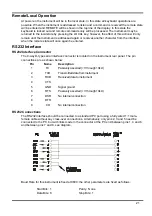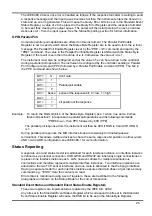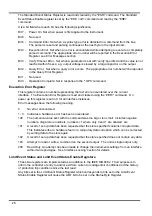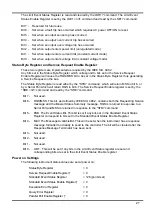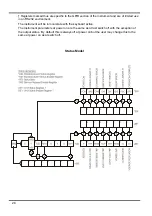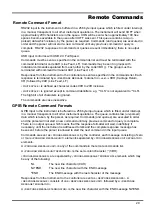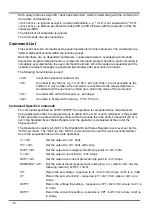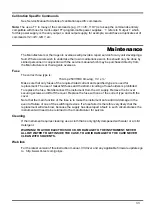
Each query produces a specific
<RESPONSE MESSAGE>
which is listed along with the command in
the remote commands list.
<WHITE SPACE>
is ignored except in command identifiers. e.g. '*C LS' is not equivalent to '*CLS'.
<WHITE SPACE>
is defined as character codes 00H to 20H inclusive with the exception of the NL
character (0AH).
The high bit of all characters is ignored.
The commands are case insensitive.
Command List
This section lists all commands and queries implemented in this instrument. The commands are
listed in alphabetical order within the function groups.
Note that there are no dependent parameters, coupled parameters, overlapping commands,
expression program data elements or compound command program headers; each command is
completely executed before the next command is started. All commands are sequential and the
operation complete message is generated immediately after execution in all cases.
The following nomenclature is used:
<rmt>
<RESPONSE MESSAGE TERMINATOR>
<nrf>
A number in any format. e.g. 12, 12·00, 1·2e1 and 120e-1 are all accepted as the
number 12. Any number, when received, is converted to the required precision
consistent with the use then rounded up to obtain the value of the command.
<nr1>
A number with no fractional part, i.e. an integer.
<nr2>
A number in fixed point format e.g. 11·52, 0·78 etc.
Instrument Specific Commands
For commands specified as 'WITH VERIFY' the operation is completed when the parameter
being adjusted reaches the required value to within ±5% or ±10 counts, whichever is the greater.
If the value fails to settle within these limits within 5 seconds then the Verify Timeout bit (bit 3) is
set in the Standard Event Status Register and the operation is completed at the end of the
timeout period.
The Operation Complete bit (bit 0) in the Standard Event Status Register is only ever set by the
*OPC command. The *OPC (or the *OPC?) command can be used for device synchronisation
due to the sequential nature of remote operations.
V1 <nrf>
Set the output to <nrf> Volts.
V1V <nrf>
Set the output to <nrf> Volts with verify.
OVP1 <nrf>
Set the output over voltage protection trip point to <nrf> Volts.
I1 <nrf>
Set the output current limit to <nrf> Amps.
OCP1 <nrf>
Set the output over current protection trip point to <nrf> Amps.
DAMPING1 <nrf>
Set the current meter measurement averaging ( I
AVG
) where <nrf> has the
following meaning: 0=OFF, 1=ON.
V1?
Return the set voltage – response is V1 <nr2><rmt> where <nr2> is in Volts.
I1?
Return the set current limit – response is I1 <nr2><rmt> where <nr2> is in
Amps.
OVP1?
Return the voltage trip setting – response is VP1 <nr2><rmt> where <nr2> is
in Volts.
OCP1?
Return the current trip setting – response is CP1 <nr2><rmt> where <nr2> is
in Amps.
30

